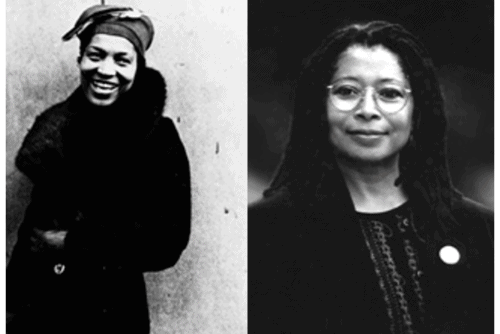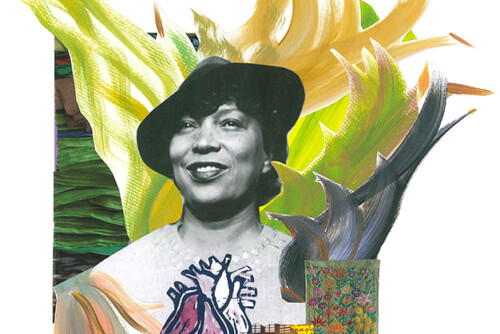Discursive Frames and Mobilizing Structures
Collective action takes place through mobilizing structures—the networks of groups and organizations prepared to mobilize for action.1 These structures, both formal and informal, serve as organizational mechanisms to collect and use the movement’s resources. Although often designed for other purposes, they also serve as sites for collective action and identity formation. To identify and develop mobilizing structures effectively, activists must successfully frame them as useful and appropriate to the social-change tasks they will be used to facilitate. In other words, strategic framing is central in shaping the available range of mobilizing structures.
In order for unions to be viewed as mobilizing structures for achieving economic justice for existing and potential LGBT members, unions and their networks have to be discursively framed as such. A discursive frame “serves as an interpretive schema that simplifies and condenses the world out there by selecting, punctuating, and encoding objects, situations, events, experiences and sequences of actions within one’s present or past environment.”2 Discursive frames are important because they A) help transform issues and problems into grievances about which individuals believe something can and should be done, and B) help participants to see that unions can make a difference. “To be successful frames must seek congruence and complementarity between the interests, values, and beliefs of the potential movement participants and the activities, goals, and ideologies of social movements.”3 Finding this congruence will not be an easy task, however, since frames that resonate with queer folks may not resonate with “straight” folks.
Activists use discursive tools (such as conference resolutions, policy statements, newsletters, websites, and education programs) as well as institutionally sanctioned spaces (such as conventions, workshops, labor schools, committee structures) to create a network of resources that can be called into action to mobilize members and potential supporters at strategically important moments. Activists forge a collective sense of themselves as political actors through the day-to-day activities of building and sustaining these networks.4
As an outcome of feminist activism, unions are struggling with new ways to think about and frame family issues. Because globalization has contributed to the merging of private life with the public sphere, it has become increasingly difficult to distinguish among work, family, and intimate relations. This shift has important implications for labor politics. It is essential for labor to understand the sexual politics of everyday life including family, intimate relations, social reproduction, sexuality, and self-care. Union feminists are calling on labor to move far beyond nominal support for policies that help women balance work and family, and to instead challenge the fundamental relations of power based on gender in every sphere of life. Responding to the challenge will be difficult for labor; some men who have been subject to the economic dislocations of globalization often experience these dislocations as a threat to their masculinity rather than a basis for labor militancy. As a consequence, they are vulnerable to political discourses and movements that call for a return to traditional “family values.”
Politically, it is problematic for labor to uncritically co-opt the conservative discursive hold on “family values” by turning to “working families;” such a discursive frame does not take into account the sexual politics of intimate kinship, or recognize the great variation in family structures and gender relations that are part and parcel of globalization. It also does not adequately acknowledge the condition of individuals who are exploited or at risk within their family structures, trapped in authoritarian, exploitative, or violent living arrangements. Progressive organizations that make a simple appeal to “working families”—without recognizing the complexity of families—will not be able to mobilize a viable progressive labor movement.5 Cognitively, such language evokes the patriarchal family based on traditional gender roles, and leaves little room for labor to address the real needs of many workers who live their lives within alternative families including single-headed households, multigenerational households, gay and lesbian households, co-habiting adults, single households, childless couples, and unrelated adults sharing domestic responsibilities. Debates over the interpretation of a frame often result in the reformulation and extension of meaning so that they appeal to a broader audience.
Conclusion
The labor movement is formally structured to represent the economic and political interests of workers at local, national and international levels, and thus represents a valuable transnational resource for feminist and LGBT activists. Networks and alliances between trade unions and LGBT activists are vital; complete consensus is unnecessary, but without such groupings, activists involved in queer organizing risk isolation and burnout. While workers benefit from queer organizing, the labor movement also gains in relevance, energy and growth. However, the potential political opportunities arising from such alliances cannot be realized without first analyzing and challenging the obstacles of sexual politics within the structures of queer organizing, as discussed in this paper. As Carol Beaumont, New Zealand Council of Trade Union Secretary recently observed: “We are a long way from having stamped out homophobia—certainly in the community as a whole but also among unions—our officials, activists and members.”6
With their critique of heteronormative social relations, queer activists and feminists have the potential to revitalize and expand the boundaries of the labor movement by pushing unions to consider new forms of organizing, new types of workers and workplaces, and different types of issues.7 In turn, unions have the potential to provide queer activists and feminists with resources to participate in transnational politics. Because they identify with multiple social movements, feminist and queer labor activists are in a position to build alliances between social movements. Finally, such activism situates the local struggles of workers within a transnational context—one that attempts to link questions of economic justice to the social and economic rights of LGBT workers around the world.
- Dieter Rucht, “The Impact of National Contexts on Social Movement Structures: Across Movement and Cross National Comparison.” Comparative Perspectives on Social Movements: Political Opportunities, Mobilizing Structures and Cultural Framings. Eds. Doug McAdam et al. Cambridge: Cambridge University Press, 1996. [↩]
- David A. Snow, E. Burke Rochford, Steven K. Worden & Robert D. Benford, “Frame Alignment Processes, Micro Mobilization and Movement Participation.” American Sociological Review, 51 (1986): 464-81. [↩]
- Mary Margaret Fonow, “Human Rights, Feminism, and Transnational Labor Solidarity.” Just Advocacy? Women’s Human Rights, Transnational Feminisms, and the Politics of Representation. Eds. Wendy S. Hesford & Wendy Kozol. New Brunswick, NJ: Rutgers University Press, 2005: 221-243. [↩]
- Mary Margaret Fonow, Union Women: Forging Feminism in the United Steelworkers of America. Minneapolis: University of Minnesota Press, 2003. [↩]
- Lisa Duggan, “Crossing the Line: The Brandon Teena Case and the Social Psychology of Working Class Resentment.” New Labor Forum, 12 (2003): 37-44. [↩]
- Carol Beaumont, “Stamping out homophobia all over the world.” Paper presented at the UK Trades Union Congress Conference “Stamping Out Homophobia.” London, 2006. [↩]
- For an excellent discussion of the way women are transforming the labor movement, see The Sex of Class: Women Transforming American Labor. Ed. Dorothy Sue Cobble. Ithaca, NY: Cornell University Press, 2007. [↩]




